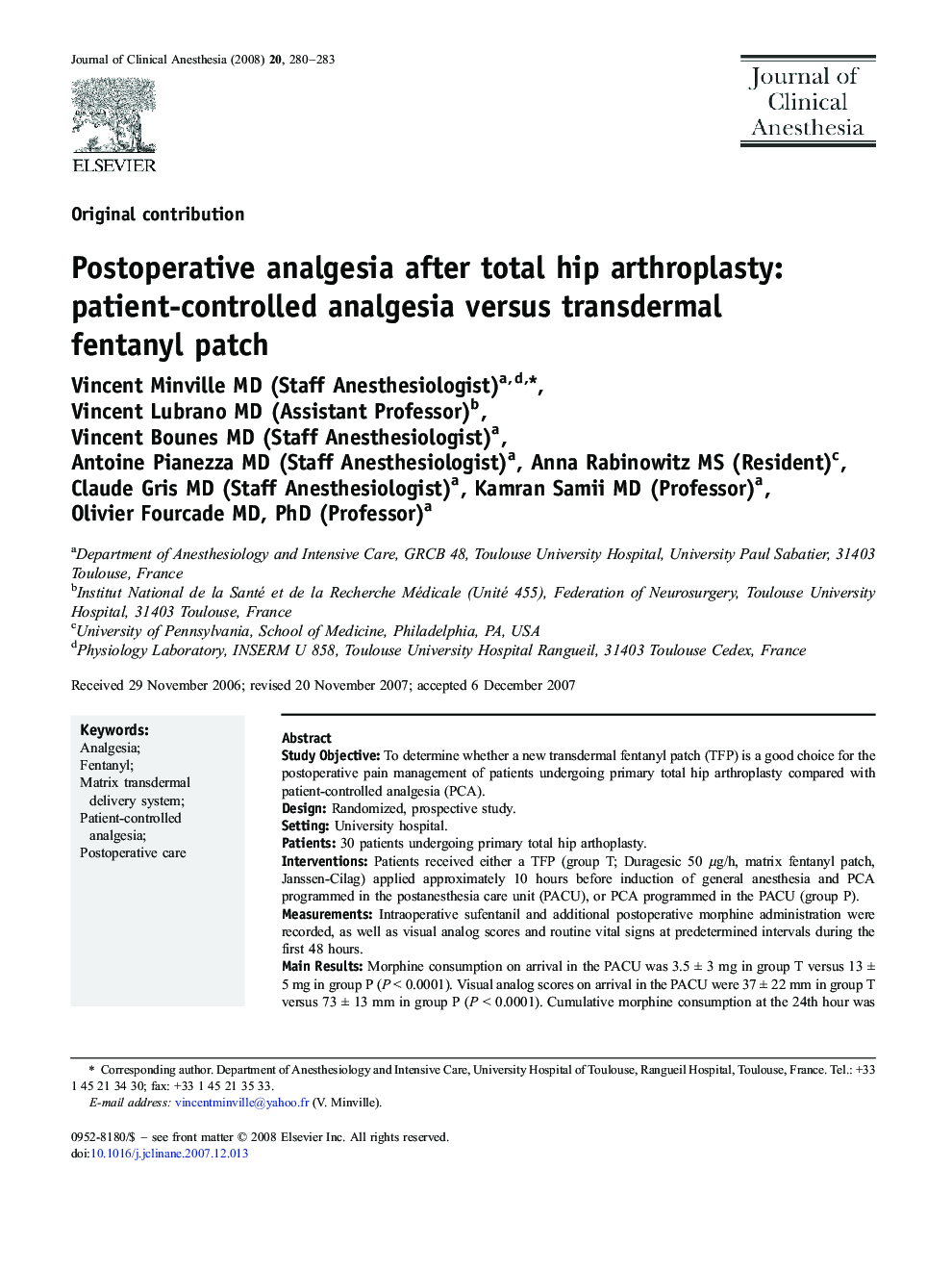| Article ID | Journal | Published Year | Pages | File Type |
|---|---|---|---|---|
| 2763501 | Journal of Clinical Anesthesia | 2008 | 4 Pages |
Study ObjectiveTo determine whether a new transdermal fentanyl patch (TFP) is a good choice for the postoperative pain management of patients undergoing primary total hip arthroplasty compared with patient-controlled analgesia (PCA).DesignRandomized, prospective study.SettingUniversity hospital.Patients30 patients undergoing primary total hip arthoplasty.InterventionsPatients received either a TFP (group T; Duragesic 50 μg/h, matrix fentanyl patch, Janssen-Cilag) applied approximately 10 hours before induction of general anesthesia and PCA programmed in the postanesthesia care unit (PACU), or PCA programmed in the PACU (group P).MeasurementsIntraoperative sufentanil and additional postoperative morphine administration were recorded, as well as visual analog scores and routine vital signs at predetermined intervals during the first 48 hours.Main ResultsMorphine consumption on arrival in the PACU was 3.5 ± 3 mg in group T versus 13 ± 5 mg in group P (P < 0.0001). Visual analog scores on arrival in the PACU were 37 ± 22 mm in group T versus 73 ± 13 mm in group P (P < 0.0001). Cumulative morphine consumption at the 24th hour was 43 ± 16 mg in group P and 4 ± 3 mg in group T (P < 0.0001). Cumulative morphine consumption at the 48th hour was 54 ± 26 mg in group P and 5 ± 4 mg in group T (P < 0.0001). Intraoperative sufentanil consumption was 38 ± 15 μg in group T versus 30 ± 5 μg in group P (not significant). The sedation score was 0 in both groups during the first 48 postoperative hours.ConclusionsPreoperative TFP application decreases pain scores and morphine consumption in the PACU and appears to have prolonged effects spanning the first 48 postoperative hours.
